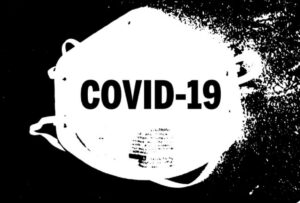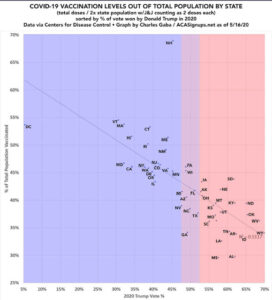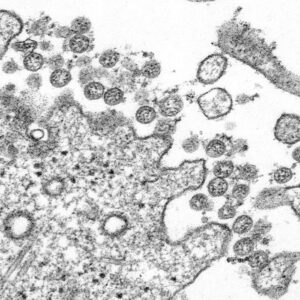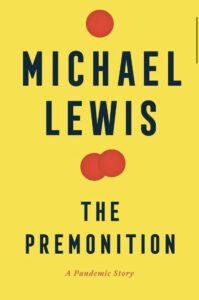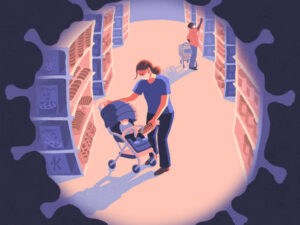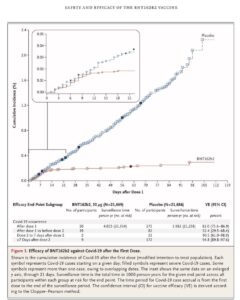Zeynep
ˈtrəst
May 18, 2021Washington Post
| The new mask rules from the C.D.C. amount to an honor system of sorts, where only unvaccinated people are expected to keep wearing masks in most places. But many Americans are wondering whether they can trust others to do the right thing. |
| In social psychology, there’s a well-established principle that a common enemy is supposed to bring people together. But shortly after the pandemic arrived, the U.S. saw a partisan divide over masks, screaming crowds outside state capitols and death threats against health officials. |
| It quickly became apparent that, even in a crisis, Americans were finding it difficult to come together. So it’s no wonder that the federal government’s new mask guidance has been greeted with reluctance — especially when fewer than half of Americans over 12 are fully vaccinated. |
| Celeste, a newsletter reader from Dayton, Ohio, wrote in with her own experience. |
| “The first day of The Great Unmasking at work went exactly as you’d expect: people who have previously bragged about not being vaccinated walking around without masks on,” she wrote. “Assuming people would act unselfishly to protect others goes against everything we’ve seen so far this pandemic.” |
| The C.D.C. is also asking Americans to trust one another at a time when faith in institutions and their neighbors is particularly fragile. According to a 2019 Pew Research Center report on Trust and Distrust in America, trust in the federal government was near record lows, and seven in 10 people said they thought that Americans’ trust in one another had declined over the past 20 years. |
“Betrayal is the wound that cuts the deepest.”
Boise State Public Radio
Most people in the Mountain West are still unvaccinated. Idaho has the second-lowest rate in the region with only 34% of its residents getting one or more doses.
COVID-19 vaccine supplies are now abundant – nationally about 60% of adults have had at least one shot.
“At least here in Casper, (Wyo.), you can go to the clinic and pick one of the three vaccines. It’s like a menu: I want Moderna, I want Pfizer, I want Johnson & Johnson. We have that much vaccine now,” said Mark Dowell, an infectious diseases physician and Natrona County health officer.
Even so, most people in the Mountain West are still unvaccinated. And Wyoming has the region’s lowest vaccination rate with about a third of residents with at least one shot. Idaho is a close second at about 34% of its residents with one or more doses.
To achieve herd immunity, epidemiologists have suggested we need about 70% of people to be immune, though that number is hard to pin down without more research.
Dowell said we also don’t know how many people actually were infected with COVID-19, how many of those built up antibodies, and how long those antibodies might last.
“We think that for every one infection, there may have been one or two more that had symptoms that went undetected,” he said.
Even if we could figure out how many were infected, he said we still have one big unanswered question: “Of the people that had the infection but didn’t know it, did they get good protection from their immune system to add to our herd immunity?”
We also don’t know how long the vaccines will stave off the virus, though many expect them to offer protection for at least a year.
Dowell says it could take several months to figure out how much of the virus we’ve stopped, saying, “The proof of the pudding will be next fall and winter when everybody’s inside again.”
At the same time, areas with low rates of immunity and high rates of spread could allow the virus to mutate into a more dangerous strain.
“That’s another reason to get vaccinated, to head off the mutations,” he said. “The worry is that you’ll find a variant eventually that will not really be covered by the vaccines.”
Dowell said he is continually talking to patients who believe in false conspiracy theories about the vaccine, ranging from it causing infertility to vaccines actually being tracking microchips from Bill Gates. At the same time, he still hopes he can convince more people to get it.
“When you’ve seen people die horrible deaths from COVID, it changes your perspective on things,” he said. “I had a close, healthy friend that died of COVID way before we had the vaccines. And it was a rough death. I sat at his bedside as he died, as we took him off the ventilator … it’s rough.”
Guest essay on why novelty means severity, and why so many questions about variants, children, Long Covid, endemicity and more revolve around that very notion by Dylan Morris, PhD.
. Nothing in this pandemic makes sense except in the light of novelty.
‘…wealthy countries have two choices for how the global pandemic ends: via natural infection or via vaccination. We should choose vaccination.’
‘Remembering that novelty means severity helps us see that the vaccines provide cause for hope, even if SARS-CoV-2 manages to stay with us for years. SARS-CoV-2 might stick around; the COVID-19 pandemic will struggle to do so.
But it also makes clear that those of us in wealthy countries have two choices for how the global pandemic ends: via natural infection or via vaccination. We should choose vaccination. And we must commit to that choice now. We don’t have much time.’
https://www.theinsight.org/p/novelty-means-severity-the-key-to
I continue to think where we’d be as a country right now with this pandemic if it had not been allowed, and encouraged, to become political. Hundreds of thousands did not need to die. -dayle
“One day some historian will look back and say how remarkable it was that these strange folk who called themselves ‘Americans’ governed themselves at all, given how they went about it.” -Michael Lewis [p.78.]
💯%: “…this was a major blunder that threatens to set back much of the progress made. President Biden needs to fix it, urgently […] for the public good.” -Dr Leana Wen
While many people happily shed their masks and celebrated the apparent end of the pandemic, others are concerned that with only 37 percent of the country fully vaccinated, this relaxation is premature and could lead to a resurgence of infections
The CDC’s mask guidance is a mess. Biden needs to clean it up.
This was an astounding strategic and tactical mistake. It will have lasting repercussions unless the White House steps in to clean up the CDC’s mess. As a start, the administration should clarify that while vaccinated people are generally not at risk, the unvaccinated are still at high risk. Therefore, if there is no reliable way to verify vaccination status, indoor mask mandates must still remain in place.
“We do not have enough vaccinated; we are seeing frequent emergence of new variants[…]Relaxing NPIs (masks/distancing) before adequate vaccine coverage could result in tremendous loss of potentially averted cases, hospitalizations & mortality.” -Dr. David Pate, Idaho Covid Task Force
Please. Just a little while longer.
😷😷😷😷😷😷😷😷
This is the only herd we’re going to have if you don’t vaccinate.
Heartbreaking.
December 10, 2020Washington Post
(Image: Mikyung Lee for The Post)
Stealing to survive: More Americans are shoplifting food as aid runs out during the pandemic
Retailers, police departments and loss prevention researchers are reporting an uptick in theft of necessities like food and hygiene products.
[Headline only; adverse to paywalls and subscriptions for news and information that should be free for everyone, not only for those who can afford. So I do not subscribe. -dayle]
Instead of two shots, should we be doing one so more are vaccinated, with 65% efficacy instead of 95%?
Vaccines and Decision-Making with Imperfect Data
It’s trade-offs all the way down
|
|
The peer-reviewed paper outlining data from the Pfizer/BioNTech vaccine was just released, as at type, the FDA is holding a meeting which will almost certainly provide emergency authorization for this vaccine. As the editorialaccompanying the paper said, the results are “a triumph.” It’s only December, and we are about to launch mass vaccination with ~95% efficacy in preventing disease—likely even higher for preventing severe disease. Remember that as late as April of this year, experts (including Dr. Fauci) thought 18 months to two years was too optimistic a timeline for a vaccine, and the FDA was ready to approve a vaccine with only 50% efficacy.
Instead, what we have is a vaccine ready at half the time the most optimistic timeline projected, with twice the efficacy hoped for. It’s remarkable.
There’s a lot more to be said, but here’s something that jumped at me while looking at the paper at The New England Journal of Medicine, as well as the files submitted to the FDA. Look at that chart below, comparing detected disease between those in the vaccine and placebo group.
Eyeballing (we don’t have the underlying data), the first shot seems to have 65-80% efficacy in the full group—but we don’t know for how long that lasts. Hence, we have durability of immunity data—for three more months, to day 119—only with the booster shot.
Given the shortages, the potential for single dosing—at least for some populations—or more time between the doses is an important question. It’s possible that a single dose—one that can cover twice the number of people—would provide a significant benefit to the recipients, though we would be unsure about whether the immunity protections last as strongly three months later. This is no minor question. The United States is already planning to withhold vaccination from people unless a second shot has already been secured. If we get fifty million doses now, that’s 25 million people who could be vaccinated now who won’t be even though the doses are sitting in storage.
What should the policymakers do? This seems like a scientific question, but it is not pure science because there are trade-offs on all sides. The question is confronting the dilemmas of not vaccinating millions of people versus vaccinating a smaller group with higher efficacy; and risking a second wave if immunity wears off quickly in an unexpected way. What about trust in vaccines? Can we even do anything that veers, even slightly, from the protocols, let alone something as major as booster timing? Is 60-80% efficacy vaccination for 200 million is better than 95% for 100 million? Given how terrible the next few months look to be, how do we prioritize what we do first? Can we space the booster a bit while we wait for longer-term data? We can model some of what this means depending on who’s vaccinated and whether people adhere to distancing or quarantines after vaccination, but we can’t easily decide which is better without bringing in ethical preferences and thorny questions.
However, at a minimum, we should continue testing as we vaccinate.
